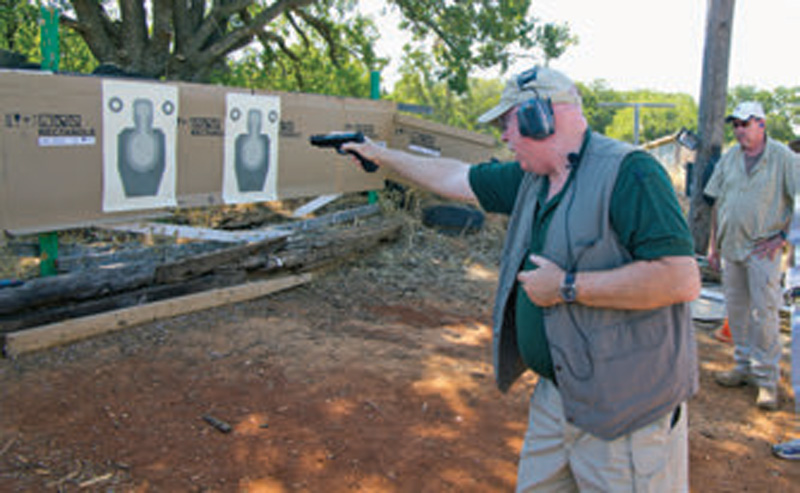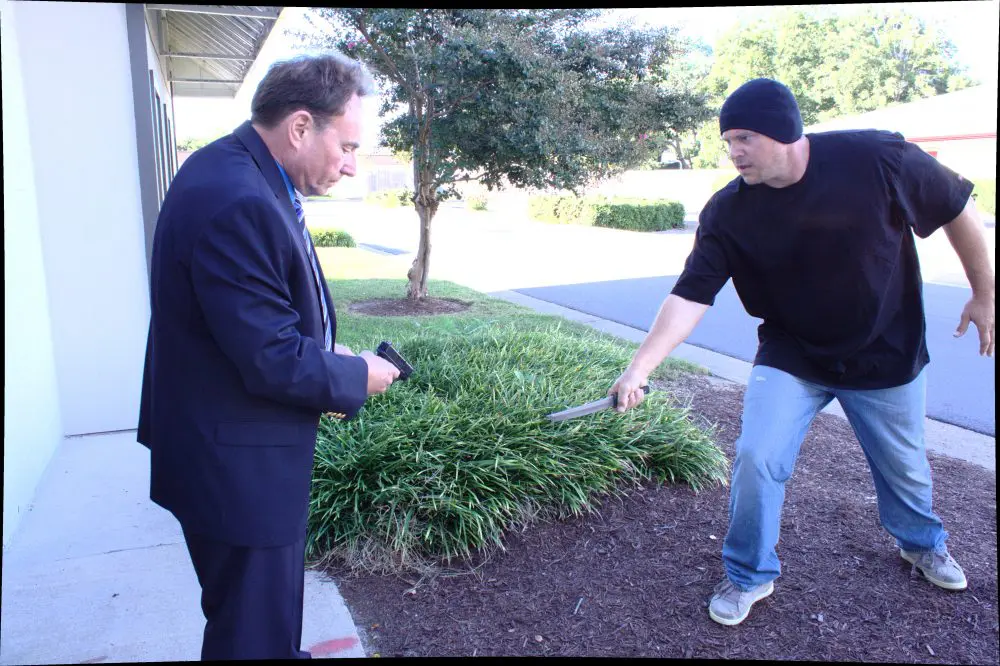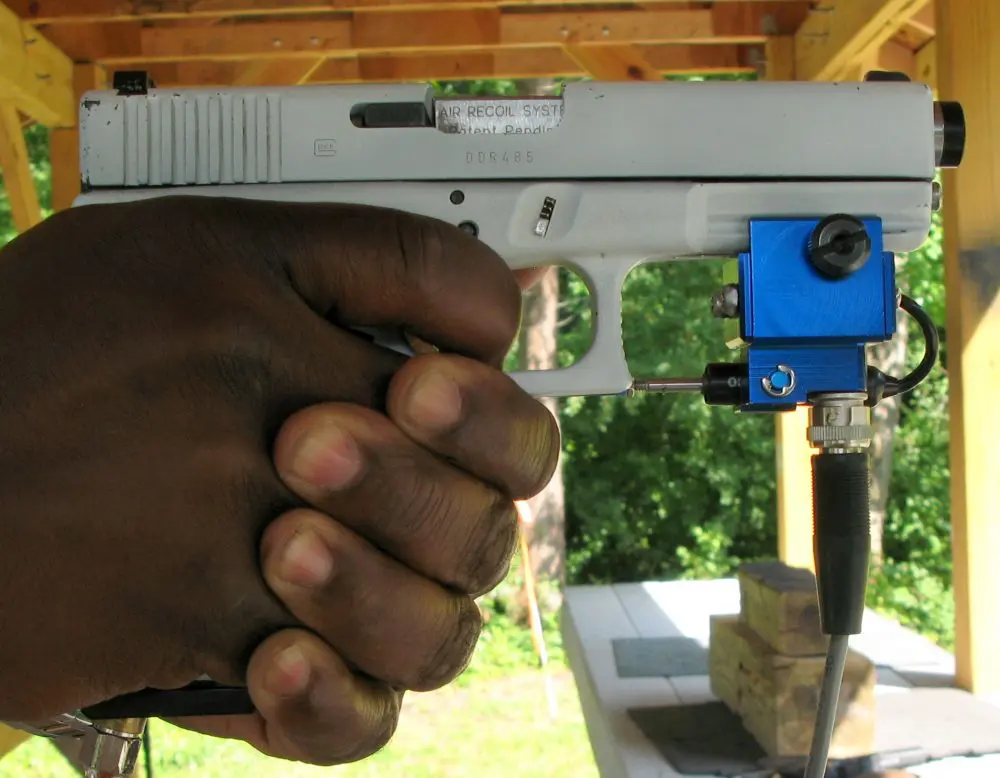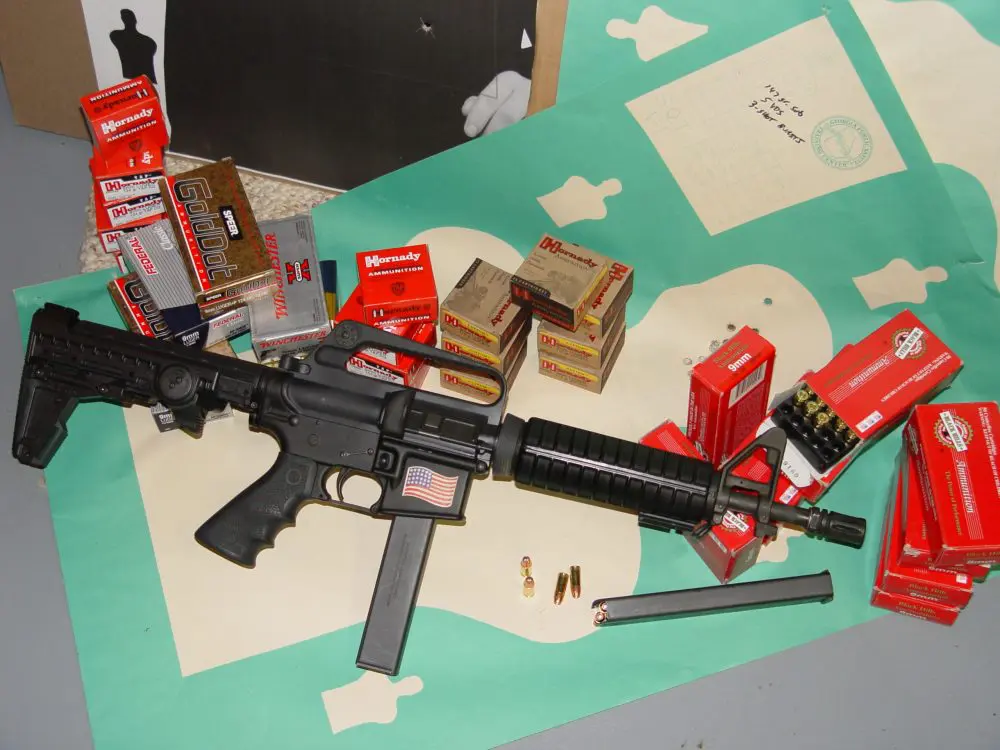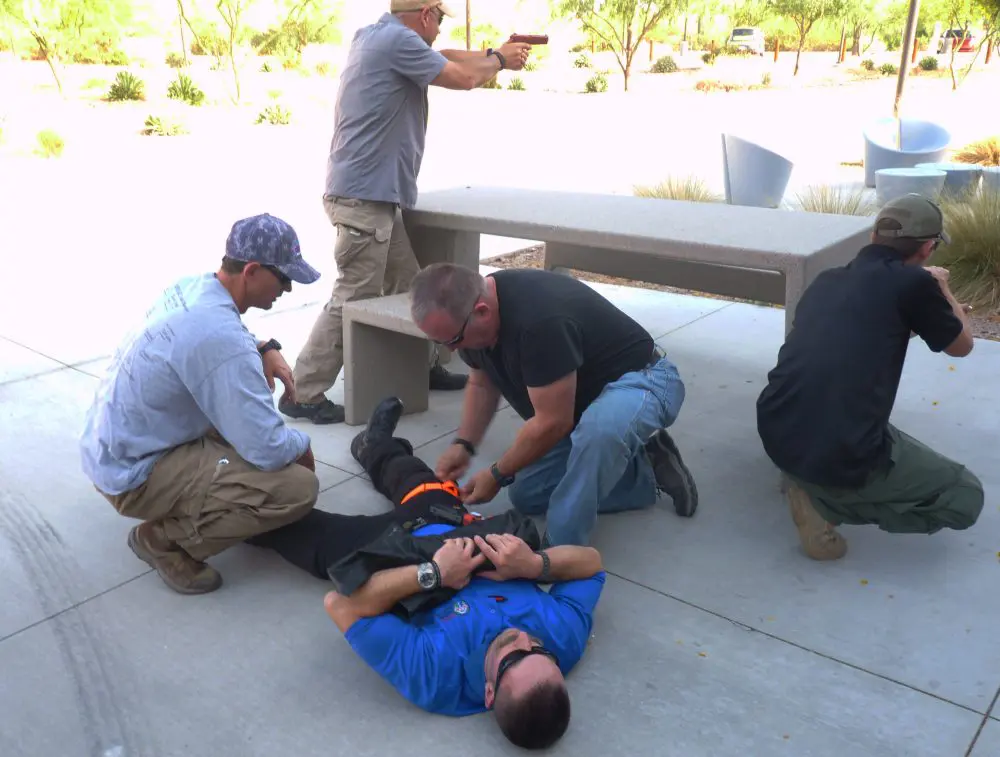A well-trained brain is the most dangerous weapon. It will recognize threats and the need for taking any advantage, such as being armed, when a threat becomes deadly.
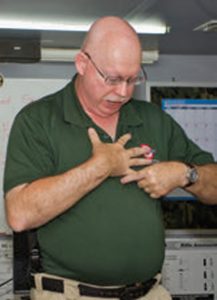
Few have the luxury of carrying a long gun everywhere, but handguns are a different story. Getting the training needed to become well trained is also a different story. Training a lot does not equate to training well. Pick trainers carefully, Grasshopper!
Some believe great training classes are best described by “lots of rounds” or “cool ninja stuff” or ”high-speed, low-drag.” I admire folks who stand and pour hundreds upon hundreds of rounds downrange, decimating cardboard and paper or making steel ring like a popcorn kettle, all while dressed in the latest concealed carry outfit or more web gear than a platoon, and carrying an M4 lookalike heavier than my 2002 GMC pickup.
If your sarcasm detector has been activated, let me say that I do like nice gear and clothes, don’t mind firing lots of rounds (if not just making noise for a trainer’s positive round-count reviews), and enjoy hearing and seeing the latest high-speed, low-drag (HSLD) stuff, even if I’ll never have a team. However, the bottom line is I’m all about practicality, not mall or keyboard ninja stuff that might get someone I care about, including me, killed.
Not one normally involved in door kicking, when the air mover stirs the smelliness, odds are I’ll not have a load-bearing vest/body armor but will have a handgun. At home I might have a long gun with what it contains at the beginning of the altercation, and scant other ammo I can grab and carry. Thus, training including elements that integrate into concealed carry, home or vehicle defense attracts me.
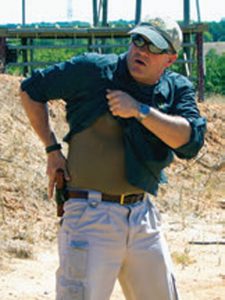
Table of Contents
THE TRAINING TEAM
Luckily, I live within driving distance of several talented training groups and have taken advantage of that on a number of occasions. Two of them are Bluff Dale Firearms Academy (Fort Worth, Texas) and Rangemaster (Memphis, Tennessee). While both do teach HSLD folks, their personal-defense classes for everyday guys and gals shine.
For around 40 years, Rangemaster’s Tom Givens has trained civilians, law enforcement, and military personnel in firearms use. With an extensive background in law enforcement, Tom has written five books and over 100 articles for publications including S.W.A.T., and has owned Rangemaster indoor shooting range since 1996.
I have trained with Bluff Dale’s Steve Moses and Allan McBee since the 1990s. In addition to being excellent instructors, both are superb shooters, have extensive martial arts backgrounds, do a ton of private security detail work, and have trained with most of the “names.” A reserve officer and SWAT-certified member of a multi-precinct Special Response Group, Steve has published articles in S.W.A.T. and an excellent book on carbine shooting.
COMBINED SKILLS COURSE
In September 2011, on the heels of Texas’ record heat wave, Bluff Dale and Rangemaster joined forces to present a Combined Skills Course in Weatherford, Texas. Designed to provide handgun training for concealed carriers, as well as tactics and gunshot wound care, this was a practical training course that included shooting from concealment using serious gear.
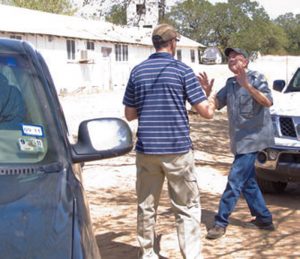
Adding to Bluff Dale’s training cadre was trauma care physician Dr. Troy Miller. A former SWAT medic, he is also a reserve police officer with a martial arts background. Troy has seen more gunshot wounds than anyone I know.
Varying in age from 28 to 64 (averaging about 50), students gathered to harvest the pearls from the lips of these erstwhile trainers. All white-collar folks armed with SIGs, Glocks, M&Ps, and XDs—serious people and serious hardware. None was interested in the latest competition two-step or game-winning holsters. They wanted to learn what works when the chips are down.
Because this was a combined skills class, there was brainwork too. Givens said that during an attack, most victims think, “I can’t believe this is happening to me!” or “Why would someone want to hurt me?” He believes training, preplanning, and practice can help overcome this tendency and promote an active survival response.
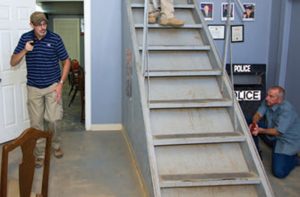
VISUALIZATION
Because getting involved in multiple gunfights for experience is less than desirable, Tom endorses visualization of possible incidents and correct reactions. Done on a routine basis, the mind becomes somewhat desensitized to an attack’s shock, allowing training and reflexes to take over. Visualization is easy, can be done anywhere, and does not involve a single live round. It also trains the mind to “accept the reality that you may have to shoot someone.”
When attacks are anticipated in a specific location, as with one of Tom’s students working in a Stop ‘n’ Rob, detailed preplanning helps choreograph potential moves and identifies safe areas beforehand. (Tom’s student drew her handgun, stepped off the X, used store items as concealment, and neutralized a robber. Just as visualized!)
SHOOTING ANALYSIS
Givens discussed in depth ten of the 56 civilian shootings in which his students have been successfully involved. Rangemaster has trained over 35,000 students, primarily from the violence-prone Memphis area. Tom’s database is invaluable, since government collected data involves law enforcement. Excluding FBI shootings, law enforcement shootings bear little resemblance to civilian shootings because officers are paid to place themselves in harm’s way. (About half of the FBI’s shootings involve attempted robbery of agents in plainclothes!)
What came out of this talk? Five of the ten shootings involved robbery. Three of those were in mall parking lots, with multiple assailants 40% of the time. Only one in ten occurred at a home, and this was an attempted robbery in the driveway.
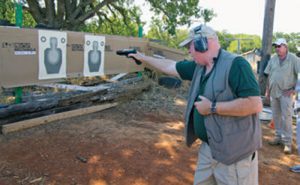
Lessons: Be armed and alert whenever outside the home, and don’t drop your guard too soon lest another bad guy steps in and joins the fight. Have a plan!
In nine of ten shootings, shots were fired at 15 feet or less—about the length of a large vehicle. The exception was the attack at home, where a wife fired from her home to about 15 yards away to protect her husband. Rangemaster’s ten students fired an average of 3.8 rounds, with a high of 11. Their hit ratio was 95%. (New York City PD’s 2005 hit ratio was 17%.)
Lessons: Be prepared to shoot from ultra close or unexpectedly far, making the necessary mental transition. Two things that count in a gunfight are time and hits. The former is extremely finite. Well-placed hits are better! (“You do not shoot at, you either shoot or don’t shoot. There is no at!”) Have extra ammunition on your person because “what you have on your person is all you’ll have to finish the fight with.”
Using an analysis of the 1986 FBI shootout with Platt and Matix, and then the contrasting stories of Georgia’s Deputy Winkler and California jeweler Lance Thomas, Givens drove home a number of points. Most importantly, “Finish the fight!” Others included having a plan to deal with violence, practicing, and being determined not to be a victim. Lastly, recognizing that violence can happen to anyone, accepting that, and being prepared to move beyond the shock.
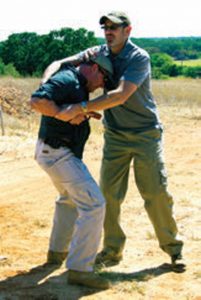
QUICKLY, CAREFULLY, AND PRECISELY
Before the two-day class ended, we had been treated to Allan McBee’s polishing our concealed draw. Rather than sweeping aside a stiff, weighted photography vest, Allan demonstrated ripping up the tail of a buttoned shirt, exposing the blaster. He then showed how to obtain a solid grip on the handgun, followed by a smooth presentation. The user can begin firing from the moment the handgun is freed, out to full arm extension.
This led into Allan’s fundamentals of shooting session, which prepared us for a longer stint with Tom the next day. Strings started with handguns concealed, to hardwire Allan’s lessons, and ended with precisely placed holes in targets.
Givens spent four hours with each group on the final day in an accelerated handgun-handling marathon. Round counters rejoice: students shot between 600 and 800 rounds! Tom reviewed the basics (catch the link/reset, smooth draws and reloads, stance, grip, etc), catching and correcting a number of errors while we poured lead downrange. Even on the range, Tom worked on our brains: “Your handgun is nothing more than a drill with a really long bit. It drills holes! You will need lots of well-placed holes.”
A variety of targets were used, each with a different emphasis. One of my favorites, the Rangemaster target, inspired Tom’s mantra of “quickly, carefully, and precisely” as we moved from large to smaller and smaller circles.
Throughout it all, Givens repeated the same basic but critical points: finish the fight; don’t stop until your gun is back up and running or your opponent is down; run your gun, don’t let it run you; hits are all that count; and get off the X.
DO IT TACTICALLY
Steve Moses’ tactics for home defense were simple. Harden the exterior while recognizing that no normal house can be made invasion proof. Plan your safe room for maximum lethal efficiency, making entry too costly for home invaders. If you must leave that room, or perhaps to reach it, Steve reminded us that the choice of using a slow, methodical approach or a faster, aggressive technique is dependent on the situation— there are no rules in a gunfight.
Steve’s tutelage in handling unwanted contacts in the open centered around diffusion or deflection, verbal techniques, and a sudden, violent strike to the eye as a viable alternative when all else fails.
Attacks in and around vehicles may be handled the same way, adding the decision of entering the vehicle or remaining out of it. If accosted while in your vehicle (no one ever sits immobile balancing a checkbook, perusing a receipt, or yakking on a cell), the best solution involves not a handgun, but the judicious use of the accelerator! As usual, though, circumstances may dictate a firearm.
Those living in the Fort Worth or Memphis areas or anywhere in between— actually, no matter where you reside—should take the time to visit Rangemaster or Bluff Dale. If you’re lucky enough to find them together, perhaps teaching their Combined Skills course, that would be even better!
